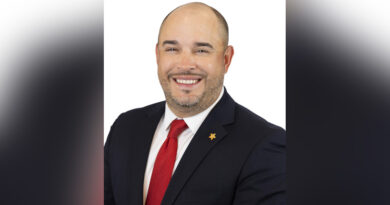Too Hot to Handle: Parkland Physicians Warn Against Heat Dangers
 Extreme Dallas heat combined with strenuous physical activity and high humidity can be a recipe for danger, says Parkland Health & Hospital System physicians.
Extreme Dallas heat combined with strenuous physical activity and high humidity can be a recipe for danger, says Parkland Health & Hospital System physicians.
From 1999 to 2010, 7,415 deaths in the United States, an average of 618 per year, were associated with exposure to excessive natural heat, according to the Centers for Disease Control and Prevention.
Since 2010, Parkland Memorial Hospital has treated more than 430 patients with heat-related diagnoses in its emergency department.
“Even short periods of high temperatures can cause serious health problems,” said Dr. Alexander Eastman, Medical Director and Chief of the Rees-Jones Trauma Center at Parkland.
“Doing too much on a hot day, spending too much time in the sun or staying too long in an overheated place can cause heat-related illnesses. It’s important to use common sense – if you think you are overheated, you probably are.”
Heat exhaustion occurs when people are exposed to high temperatures and the body becomes dehydrated.
When heat exhaustion elevates it may result in heat stroke, a life-threatening medical condition occurring when the body’s cooling system stops working.
The resulting high body temperature causes damage to internal organs, including the brain, and could result in death.
“Elderly people, aged 65 years and older, infants, children and people with chronic medical conditions are more prone to heat stress,” Eastman said.
“Therefore it’s important for family or neighbors to visit an adult at risk at least twice a day and closely watch them for signs of heat exhaustion or heat stroke. Infants and young children, of course, need much more frequent watching.”
Symptoms of heat stroke include thirst; red, warm and dry skin; body temperature over 104 degrees Fahrenheit; fast breathing and heart rate; vomiting; muscle cramps; confusion or disorientation and coma.
“If you see any of the warning signs of heat stroke, you may be dealing with a life-threatening emergency,” Eastman said. “Have someone call 911 for immediate medical assistance while you begin cooling the victim.”
Dr. Eastman offered the following tips to help a heat stroke victim before medical assistance arrives:
- Get the victim to a shady area
- Cool the victim rapidly using any methods other than an ice bath. For example, place the person in a cool shower, spray the victim with cool water from a garden hose, sponge the person with cool water or if the humidity is low, wrap the victim in a cool, wet sheet and fan them vigorously
- Monitor body temperature and continue cooling efforts until the body temperature drops to 101-102 degrees Fahrenheit
- Do not give the victim fluids to drink
- If there is vomiting, make sure the airway remains open by turning the victim on his or her side









